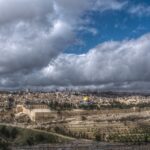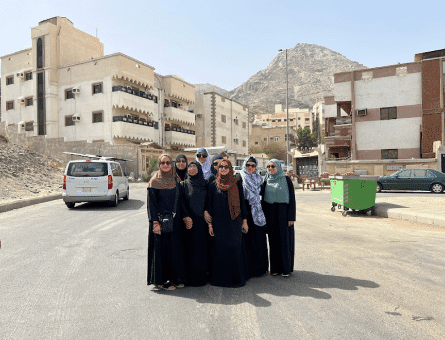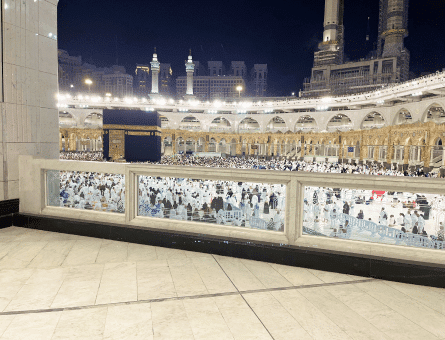What is Mina during Hajj? Everything You Need To Know
Situated about 5 miles or 8 kilometers in the eastern direction of Masjid al-Haram in Makkah, Saudi Arabia, Mina is a valley surrounded by mountains. With regards to historic Islamic landmarks, the famous area of Mina is specially called out during the Islamic month of Dhul Hijjah.
This is because pilgrims from all over the world spend the nights of the 8th, 11th and 12th Dhul Hijjah at Mina, and occasionally the night of 13th Dhul Hijjah as well. Mina is also a significant symbol of Hajj, because it is the place where the three stone pillars of the Jamarat are situated.
Read on to learn more about Mina Hajj and its significance in Islam.
What Does “Mina” Mean?
Derived from the word with the root letters ma-na-ya, Mina literally means ‘to find’ or ‘to undergo test’ or ‘to be put to the test.’ Further, the term Mina is connected to the words ‘tamanna’ and ‘manna’, which means ‘to hope for’ or ‘awaken a desire.’
When we talk about Islamic history, like everything else, there is a story behind the name Mina. It is believed that the valley of Mina is connected to the test that Prophet Ibrahim (AS) had to undergo when Allah SWT commanded him to sacrifice his only son, Prophet Ismail (AS).
However, by the command of Allah SWT, a ram miraculously appeared between the blindfolded Prophet Ibrahim (AS) and his son and the ram was sacrificed instead.
Therefore, the name “Mina” was given to the place, implying the “place where he succeeded” and the “place where he was tested.”
Moreover, the word “Mina” also means “to flow” as it was the place where during Hajjatul Wada (the Farewell Pilgrimage), Muslims along with Prophet Muhammad PBUH sacrificed many camels.
Therefore, following the Sunnah, even today, pilgrims perform the sacrifice of animals at Mina during the religious festival of Eid ul-Adha.
Why Is Mina Important During Hajj?
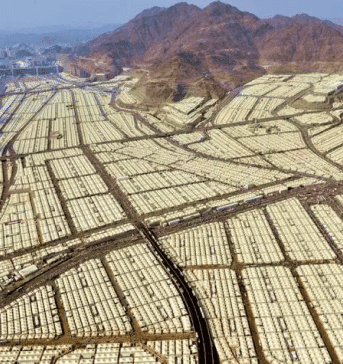
According to Islamic teachings, there are specific religious practices and the Sunnah of Prophet Muhammad PBUH that should be performed during the period of Hajj.
Muslims are instructed to spend the nights of at least the 8th, 11th and 12th Dhul Hijjah at Mina, and they have choice in whether to stay for another night on the 13th or not. After the completion of tawaf (circumambulation), Hajj pilgrims are instructed to return to Mina.
The pilgrims then travel to Mina either by bus or via foot. Upon reaching the blessed destination, pilgrims spend a full day and night in the tents erected in Mina.
During their stay at Mina, pilgrims read the Holy Quran, offer prayers, worship Allah SWT, recite Dhikr, seek forgiveness, supplicate to Allah the Exalted, and are reminded of the rituals of pilgrimage to be performed in the coming days.
Following the break of dawn, Muslims are instructed to exit Mina and move towards Mount Arafah.
What Happens at Mina?
On the third day of Hajj, Muslims are instructed to move before sunrise to the sacred area of Mina to conduct the ritual of Stoning the Jamarat or Rami.
For this ritual, pilgrims collect pebbles a day in advance, and they throw these pebbles at any of the three stone pillars standing in Mina. The stone structures are called the Jamarat.
The significance of the Stoning of the Jamarat revolves around the historical incident when Satan tried to persuade Prophet Ibrahim (AS) to disobey the command of Allah SWT to sacrifice his only son.
Therefore, throwing pebbles at the three Jamarat signifies Prophet Ibrahim’s (AS) strong faith and his rejection of Satan’s attempt at manipulation. Therefore, the specific ritual is considered one of the most emotionally gratifying experience of Hajj.
After Rami, pilgrims conduct the ritual of sacrifice, followed by distributing the meat to the underprivileged and poor.
How Long Is Mina?
Located at the eponymous Mina valley, Mina is at an elevation of approximately 1230 ft (400m). Mina is bordered by the 4th Ring Road at the north, the district of Makkah at the west, the al-Jamaih district to the south and Muzdalifah to the east.
Starting from Makkah’s city center to Muzdalifah, the valley of Mina covers around 16.8 kilometers.
The Jamarat
There are three Jamarats found at Mina. The smallest one is Jamarah al-Sughra, the middle one is Jamarah al-Wusta, and the largest one is Jamarah al-Aqaba.
The ritual of Rami holds symbolic significance in Islam. The first appearance of Jamarah symbolizes the temptation of Prophet Ibrahim (AS) for not sacrificing his son according to the command of Allah SWT.
The second Jamarah symbolizes the temptation of the wife of Prophet Ibrahim (AS), Hajer (RA), against their son’s sacrifice.
And the third Jamarah signifies the temptation of Prophet Ismail (AS) against getting sacrificed. Thus, the act of Rami signifies the shunning of a Muslim’s self-doubt to attain closeness to Allah SWT, just like Prophet Ibrahim (AS) threw seven stones at Satan to defy his manipulation.
However, the stubborn Satan appeared twice again after that, and every time he appeared, Angel Jibril (AS) urged Prophet Ibrahim (AS) to pelt stones at him.
Abd-Allah narrates: “He came to the largest Jamarah and put the House on his left and Mina on his right and stoned it with seven (pebbles), and he said: This is how the one to whom Suratul Baqarah was revealed (peace and blessings be upon him) stoned it.” (Al-Bukhari: 1748 and Muslim: 1296)
Mina Mentioned in the Holy Quran
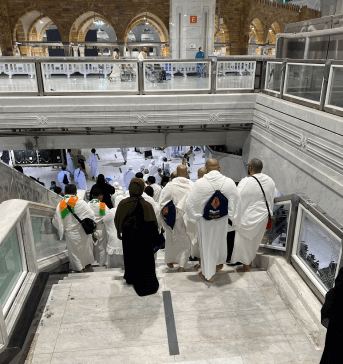
Mina is mentioned in Surah al-Baqarah in the Holy Quran as follows:
Facts about Mina
Some little-known facts about Mina are mentioned below:
Fact 1: City of Tent
Mina is also known as the “City of Tents.” To provide temporary accommodation to over 3 million pilgrims who take part in Hajj every year, the Saudi government has installed more than 100,000 air-conditioned tents in the 20 km2 area of Mina.
Fact 2: Cave of Mursalaat
Little do people know that there lies a cave in Mina known as “Cave of Mursalaat.” This was the place where Surah Mursalaat was revealed to Prophet Muhammad PBUH.
Fact 3: The First Pledge
According to Seerah an-Nabawiyyah (the Prophetic Biography), it was Mina where the event of the First Pledge took place, and a group of twelve men from Madinah accepted Islam.
The First Pledge stated the following conditions;
- Do not associate partners with Allah SWT
- Do not commit adultery
- Do not steal
- Do not kill children
- Do not be disobedient (when commanded)
- Do good deeds and not to bring false statements upon one another (fellow Muslim men and women)
The valley of Mina marks the turning point and revolution of Yathrib, which is now known as the luminous city of Madinah.
Thus, it is believed that if a Muslim takes a similar pledge at Mina, the blessings of Allah SWT will be showered upon them, and they will take a turn towards a more spiritual and religious journey that will last a lifetime.
Summary – Mina
Otherwise known as the City of Tents, Mina is a valley surrounded by mountains. It is located on the eastern side of Makkah, Saudi Arabia. The valley of Mina holds great significance in the Islamic ritual of Hajj and Umrah.
During Dhul Hijjah every year, around 3 million pilgrims come to stay in the 100,000 tents located there.
Explore The New Pilgrim App
The Ultimate App
for Hajj and Umrah!






